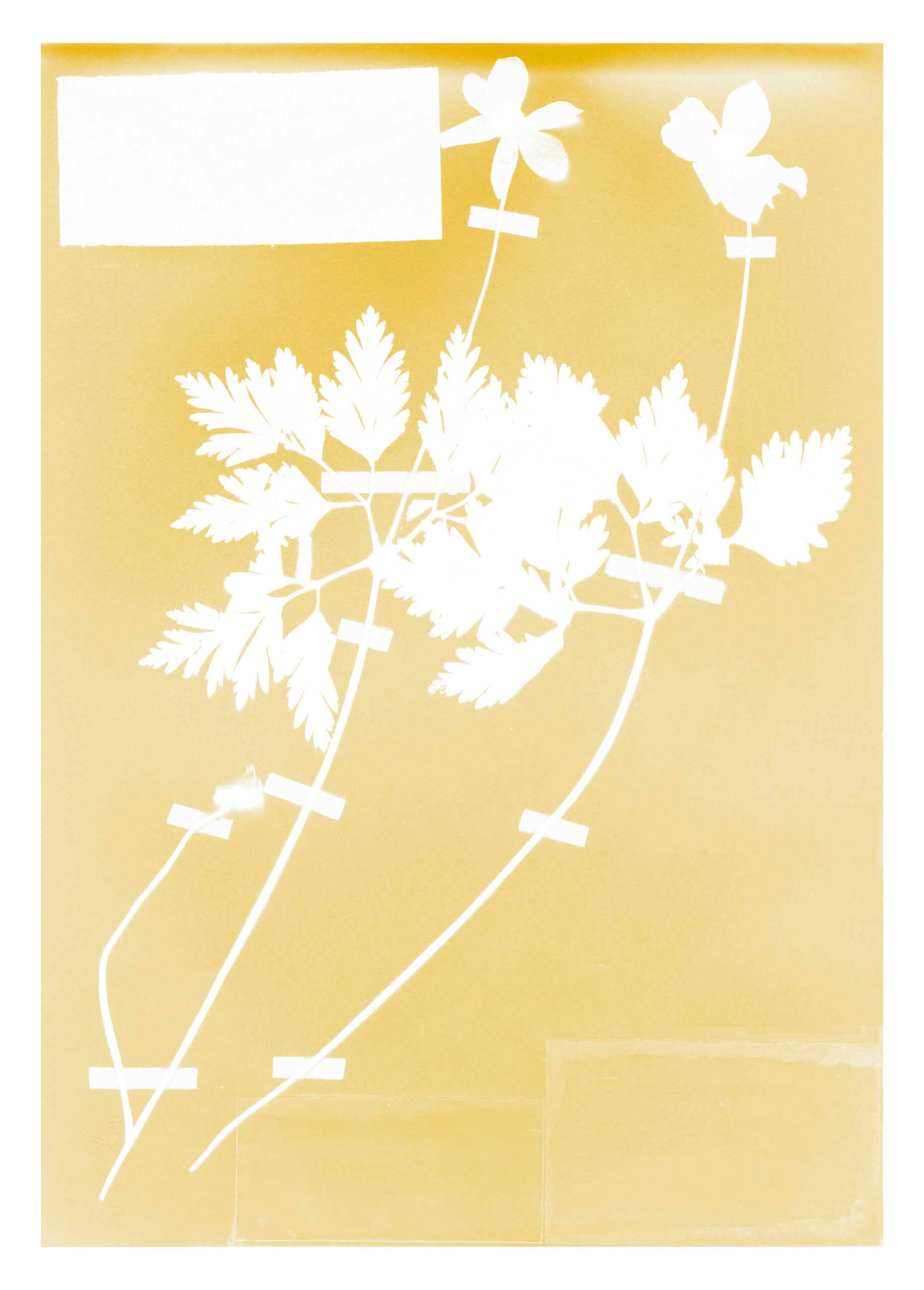UMEZAWA HIDEKI
YOYOGI BOTANICAL PATTERNS
info
back
close
back
UMEZAWA HIDEKI
YOYOGI BOTANICAL PATTERNS
These images are based on plant specimens collected and preserved over a century ago in Shibuya and Yoyogi by Japanese botanist Dr. Tomitaro Makino (1862–1957). Among these specimens are species that have since become extinct in the area or are now classified as endangered. Deprived of their academic classification and reduced to botanical forms reminiscent of cyanotypes, the images retain only Dr. Makino’s handwritten notes, including dates and collection locations.
Once, a diverse array of wild grasses and trees thrived in this region. Dr. Makino’s meticulous documentation and collection of these plants reveal a fragment of an ever-changing urban landscape shaped by the passage of time.
Observing and rediscovering nature and plant life across eras may serve as a means to reconsider the relationship between humans and the environment. The plants that have disappeared with urbanization -now unseen- speak to us in quiet whispers.
Support: Makino Herbarium (MAK), Tokyo Metropolitan University
profile
UMEZAWA HIDEKI
Born in 1986, Gunma Prefecture, he completed the Graduate School of Fine Arts at Tokyo University of the Arts. His work, using sound, photography, and other media, explores pre-linguistic sensations perceived in the environment and the complexity of natural phenomena.
Major exhibitions include Thailand Biennale, Korat (2021), DANCING WITH ALL: The Ecology of Empathy (21st Century Museum of Contemporary Art, Kanazawa, 2024), L’écologie des choses (Maison de la culture du Japon à Paris, 2025), among others.

